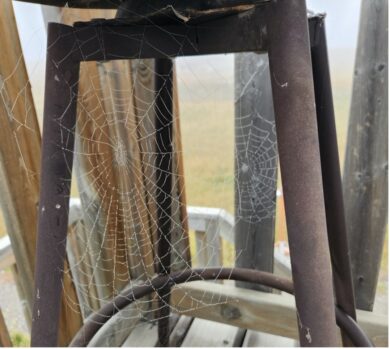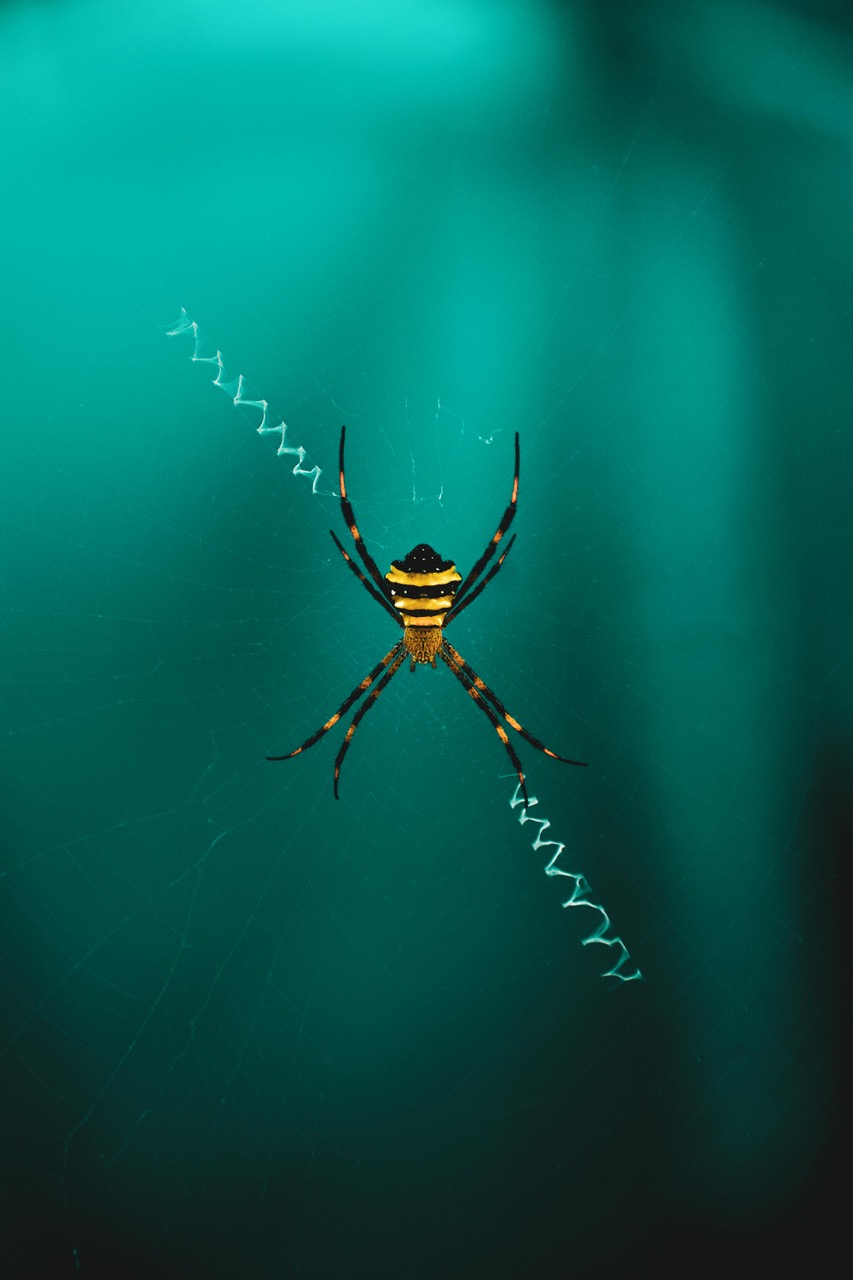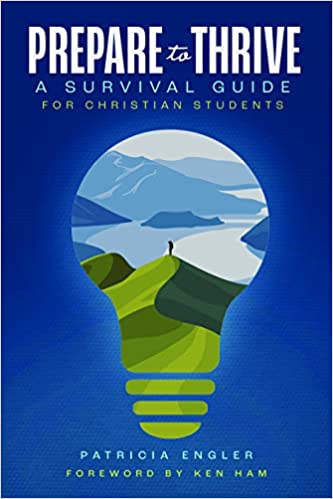Many people are afraid of spiders, but they are excellent examples of God’s engineering design in nature, especially in the production and use of their silk. Spider silk starts as a “liquid crystal”—a highly concentrated water-based solution containing rod-shaped molecules. This means it both flows like a liquid and has its molecules oriented and ordered like a crystal. The silk solution is produced and stored in a group of silk glands until it is drawn out through the silk ducts for use. Evolutionists cannot decide whether the liquid crystal structure is an “accident of Nature” or a necessary requirement, but they think it may help to control crystallization. If the silk crystallized prematurely, it would block the ducts and kill the spider. (De Luca & Rey) Creationists would call it a design feature.
Spider silk is a solution of fibroin molecules in water. When the spider draws out a strand, the water-based solution passes through the spider’s spinning duct, rapidly assembling the proteins into an insoluble thread. This process involves precise control of the pH, concentration of ions, and water content in the duct (Römer & Scheibel). As the water evaporates, the silk hardens to a toughness up to ten times greater than similar man-made fibres which require processing at higher temperatures with harsher chemicals than what spiders use at room temperature (Kerkam et al).
About half of the over 34,000 known spider species spin webs to catch their prey, and webs have been found to take over 130 different shapes with orb webs being among the most studied. These webs are typically made from multiple types of silk. Spiders use their dragline silk to make the frame and spokes of their orb webs. A temporary template for the capture spiral is made of silk from another gland and helps stabilize the web. Then they use “Flag silk,” produced in another gland, for the capture spiral. This silk is super-stretchy to dissipate the impact energy of prey that collides with it, which can often be bigger than the spider! However, Flag silk is not sticky in itself. The stickiness comes from the glue the spider applies to the threads. Connections between the dragline and Flag silks, as well as between the web frame and the substratum (branches, building structures, furniture, etc.) are made from a fourth kind of silk produced in yet another gland that forms a sophisticated cement (Römer & Scheibel).
The proteins in spider silk are made up of repetitive amino acid sequences. These sequences are generally only 10-50 amino acids long, can be repeated hundreds of times within a single protein, and may comprise more than 90% of the whole silk protein. The ends of the silk proteins have non-repetitive regions about 100-200 amino acids long that are crucial for assembling the proteins into fibres (Römer & Scheibel).
In comparison to insects, spiders are unique in their silk-spinning capabilities. This is because an individual spider has multiple highly specialized glands that can produce very different silks simultaneously. Even the same silk from the same spider can have varying properties depending on environmental conditions, the amino acid composition of the silk solution, and diet (Vollrath & Knight).
Global silk production in 2022 was 91,221 metric tons (Statistics | INTERNATIONAL SERICULTURAL COMMISSION, n.d.), and as of April 2024, raw silk sold for $70-90US/kg, depending on the region (2021). This primarily comes from the chrysalises of the moth Bombyx mori. Scientists hope to one day produce artificial fibres based on the silk of the golden silk spider Nephila clavipes, which is tougher than moth silk (Vollrath & Knight).
Scientists have been experimenting with ways to produce spider silk for decades and have tried many biotechnological methods. The first attempt involved bacteria, but this host turned out to be unsuited to the task because the silk genes were just too big and the bacterial machinery for expressing the genes differed from spiders in its use of codons (Römer & Scheibel). Codons are DNA and RNA sequences three nucleotides long. Each codon codes for a specific amino acid to be added to a protein chain or a signal to stop.
Since bacteria were not ideal for producing spider silk, it was decided that a eukaryotic host (having a cell nucleus enclosed in a membrane) might work better. The yeast Pichia pastoris was tested, and this time, the problem was in purifying the silk proteins, not producing them. Plants, such as potato or tobacco, were also tried with similar results (Römer & Scheibel).
An article in the May 2002 Dialogue talked about how Nexia Biotechnologies experimented with using goats to produce silk in their milk glands (2002). However, the silk concentration was low, and there were more purification problems. Tests on other mammalian cell lines produced comparable results (Römer & Scheibel).
Another attempt used a modified baculovirus to infect insect cell lines. In comparison to mammalian cells, this method is relatively easy to culture in a lab, and the gene expression conditions are potentially easily modified. However, it is too inefficient and expensive for large-scale production (Römer & Scheibel).
The focus eventually came back to using bacteria. This time, the spider silk genes were adapted to the bacterial codon usage and employed a combination of synthetic DNA modules and authentic gene sequences. This dramatically increased the yields, and it can also be engineered to include tailor-made properties for experimental analysis (Römer & Scheibel).
Attempts to spin synthetic spider silk using a tiny silicon spinneret have already met with some success. It is recognized that spiders’ dragline silk requires a specific molecular structure for the silk molecules as well as crucial design characteristics for the spinning process (Vollrath & Knight), both of which God included when He made the first spiders during Creation Week.
Spider silk has a tensile strength similar to steel but is a much lighter material, so it is considered stronger. Kevlar, on the other hand, is three times stronger than spider silk but not as stretchy, so spider silk is considered tougher. For spider silk to be as stretchy as it is, its molecular “rods and springs” must be well-aligned. Kevlar does not have the right “molecular springs” in its fibres, which is why it lacks the elasticity of spider silk (Vollrath & Knight).
Another comparison with Kevlar is in the acid applied to the fibres during spinning. Spiders secrete hydrogen ions from proton pumps in the lining of the silk duct, making the solution more acidic. This is believed to help the fibre dry and stiffen. Kevlar fibres are spun from concentrated nylon solutions in sulfuric acid and passed through several water baths (Vollrath & Knight).
If spider silk is superior to manmade fibres, and even insect silk, why not farm spiders for their silk like we do with silkworms? Well, the process for reeling silk from the cocoons of Bombyx mori has been optimized only a little over centuries but is very cost-efficient. Spiders, on the other hand, have to be immobilized and their dragline silk drawn out manually, and this process is only suitable for dragline silk. It is also time-consuming and expensive. For another thing, most spiders are cannibals, although this is likely a result of the Fall, not God’s design. These factors simply make spider silk farming inefficient and costly (Römer & Scheibel) whereas silkworm farming can be done with a relatively low financial investment and produce multiple crops of raw silk each year (Bhattacharjya et al).
God has engineered everything in a spider down to the molecular structure of its silk proteins to function according to His design. Humans have yet to gain a full understanding of what we observe around us. The things we do understand inspire us to learn more and try to replicate the processes. As it says in Proverbs 25:2, “It is the glory of God to conceal things, but the glory of kings is to search things out.” Our search for knowledge and understanding should always start from a desire to glorify God.
References
Bhattacharjya, D., Alam, K., Bhuimali, A., & Saha, S. (2020). Status, potentials, constrains and strategies for development of sericulture farming system in West Bengal state of India (review). Bulgarian Journal of Agricultural Science, 26, 709–718.
De Luca, G., & Rey, A. D. (2006). Biomimetics of spider silk spinning process. Design and Nature III: Comparing Design in Nature with Science and Engineering, 1, 127–136. https://doi.org/10.2495/DN060121
Kerkam, K., Viney, C., Kaplan, D., & Lombardi, S. (1991). Liquid crystallinity of natural silk secretions. Nature, 349(6310), 596–598. https://doi.org/10.1038/349596a0
Mike. (2021, January 22). Raw Silk price index. Businessanalytiq. https://businessanalytiq.com/procurementanalytics/index/raw-silk-price-index/
Moxie. (2002, May 1). Spider Silk? Bring On the Nanny Goats « Creation Science Association of Alberta. Dialogue. https://www.create.ab.ca/spider-silk-bring-on-the-nanny-goats/
Römer, L., & Scheibel, T. (2008). The elaborate structure of spider silk. Prion, 2(4), 154–161.
Statistics | INTERNATIONAL SERICULTURAL COMMISSION. (n.d.). Retrieved April 17, 2024, from https://inserco.org/en/statistics
Vollrath, F., & Knight, D. P. (2001). Liquid crystalline spinning of spider silk. Nature, 410(6828), 541–548. https://doi.org/10.1038/35069000


Andrea Reitan
August 2024
Subscribe to Dialogue







